Lift Off Window (Subject to change) |
NET December 9, 2020 | 14:00-23:00 UTC, 8:00-17:00 CST |
|---|---|
Mission Name and what it is |
SN8 12.5-kilometer hop, the first high-altitude flight of a Starship prototype |
Launch Provider (What rocket company is launching it?) |
SpaceX |
Customer (Who’s paying for this?) |
SpaceX |
Rocket |
Starship SN8 |
Launch Location |
Boca Chica Launch Site, Boca Chica, Texas |
Payload mass |
There is no payload on this test flight |
Where are the satellites going? |
There are no satellites on this test flight |
Will they be attempting to recover the first stage? |
Yes |
Where will the first stage land? |
SN8 will attempt a landing at the nearby landing pad |
Will they be attempting to recover the fairings? |
The fairing on this vehicle (the nosecone) is integrated into the vehicle and is not detachable |
Are these fairings new? |
n/a |
This will be the: |
|
Where to watch |
SpaceX Maybe even more fun you can watch with Tim Dodd, the Everyday Astronaut! Come ask questions and join the conversation live! |
What’s this all mean?
SpaceX will be attempting a 12.5-kilometer hop with their Starship SN8 prototype vehicle. SN8 will lift off under the power of its three Raptor engines and fly to an altitude of approximately 12.5 km (~41,000 ft). At that altitude, using its body flaps, SN8 will flip to a horizontal position and descend belly-first.Just prior to landing, using a combination of its engines and body flaps, SN8 will flip around again to attempt a soft propulsive landing on the landing pad.
What is Starship?
Starship is SpaceX’s next-generation super-heavy launch vehicle. Starship can refer to just the second stage of the vehicle or the entirety of the launch vehicle. Its first stage, known as Super Heavy, will have 28 Raptor engines and will produce approximately 71.2 MN (16 million lbs) of thrust. That will make it more powerful than the Saturn V moon rocket. Starship and Super Heavy will lift off from a launchpad in either Boca Chica, Texas; Cape Canaveral, Florida; or from an offshore launch platform. After main engine cut-off (MECO), Super Heavy will separate from Starship and go back to land near the launch site. Starship will continue on to orbit. Depending on the mission, Starship will either deploy its payload or rendezvous with several “tanker” Starships and refuel before continuing to the Moon or Mars.Prior to re-entry, Starship will perform a re-entry burn to bleed off enough of its velocity to leave orbit. It will then flip around and re-enter horizontally. Just before landing, Starship will flip around for a second time, performing a “belly-flop maneuver” to orient itself to a vertical position. It will fire its three sea-level Raptor engines and land in a similar way as the Falcon 9 and Super Heavy first stages.
History of Starship
Interplanetary Transport System
The history of Starship goes back to at least 2012 when it was known as Mars Colonial Transporter. At this time, it wasn’t much more than a few murmurings from Elon, but more detailed plans were unveiled in 2016 at the International Astronautical Congress. A two-stage carbon-fiber vehicle was announced. The vehicle, now dubbed Interplanetary Transport System (ITS), would be 122 meters (400 ft) tall and 12 meters in diameter. In an expendable configuration, the vehicle could carry over 500 tons to Low Earth Orbit (LEO). In a reusable configuration, it could carry 300 tons to LEO, more than double that of the Saturn V.
Big Falcon Rocket
At the 2017 International Astronautics Congress, a major redesign was announced. The name was changed to Big Falcon Rocket (BFR). It was downsized slightly, to only 9 meters in diameter. Small delta wings were added to the vehicle to control it and induce drag during re-entry. The BFR was a smaller and more feasible design, which was intended to launch to Mars as a cargo variant in 2022, with a crewed flight following two years later. Construction of a prototype vehicle started in early 2018 at the Port of Los Angeles but was later scrapped.Starship
In September of 2018, SpaceX announced another major redesign. The vehicle now featured three rear fins, that doubled as landing legs, and two forward canards for control during atmospheric re-entry. At the same event, it was also announced that Japanese billionaire Yusaku Maezawa was partially funding Starship development and would be one of the passengers during Starship’s first crewed trip around the moon. He, along with several different types of artists, is planned to take a flight around the moon in Starship as part of the #dearMoon project, with the goal of inspiring the artists to create works that inspire people back on Earth. A few months after this event the vehicle was renamed to Starship/Superheavy.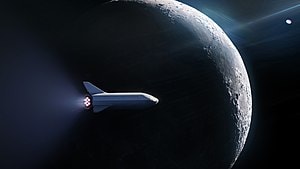
The big switch
In December 2018, Elon Musk announced that Starship switched from being built out of carbon-fiber to being built out of stainless steel. He also explained that the particular alloy they were using was significantly cheaper than carbon-fiber and got 50 percent stronger at cryogenic temperatures. The material is also tough at high temperatures, meaning it needs less heat shielding than what the previous carbon-fiber design would have required. The parts of the vehicle not exposed to the most intense heat would be cooled by liquid fuel “sweating” through tiny pores in the steel.Starhopper
Around the time of the announcement of the new stainless steel design, SpaceX began building its first prototype: Starhopper. The vehicle was built outdoors in Boca Chica, Texas, a small village near the Mexican border. SpaceX acquired property in Boca Chica in 2014, but until 2018 the area sat largely dormant with little activity. Occasional dirt deliveries were the most exciting thing happening in the four-year interim period. Late spring of 2019 saw the completion of Starhopper. Initially, Starhopper was built with a nosecone, but a windstorm in January caused it to fall off the vehicle and collapse. Since the nosecone was not necessary for flight, SpaceX decided to forgo it and launch without.
Starhopper hops!
On July 25, 2019, Starhopper completed its first untethered hop, successfully reaching an altitude of 20 meters, before completing a soft landing. A month later, on August 27, Starhopper completed a 150-meter hop. After this flight, Starhopper was retired and SpaceX started going full-steam-ahead with MK1.
Starship Mk1 and Mk2
While testing Starhopper, SpaceX also began constructing its first of two full-scale prototype vehicles: MK1 in Boca Chica and MK2 in Cocoa, Florida. Elon Musk announced on Twitter that the teams at each facility were in a race to orbit. Each team constructed the vehicles using their own techniques, but they were required to share anything they learned along the way. Because SpaceX had already started constructing their first two full-scale Starship prototypes as Starhopper was undergoing testing, for the first time 2019’s Starship presentation took place in front of an actual Starship mock-up. Mk1 was rolled out to the launch site on October 30, 2019.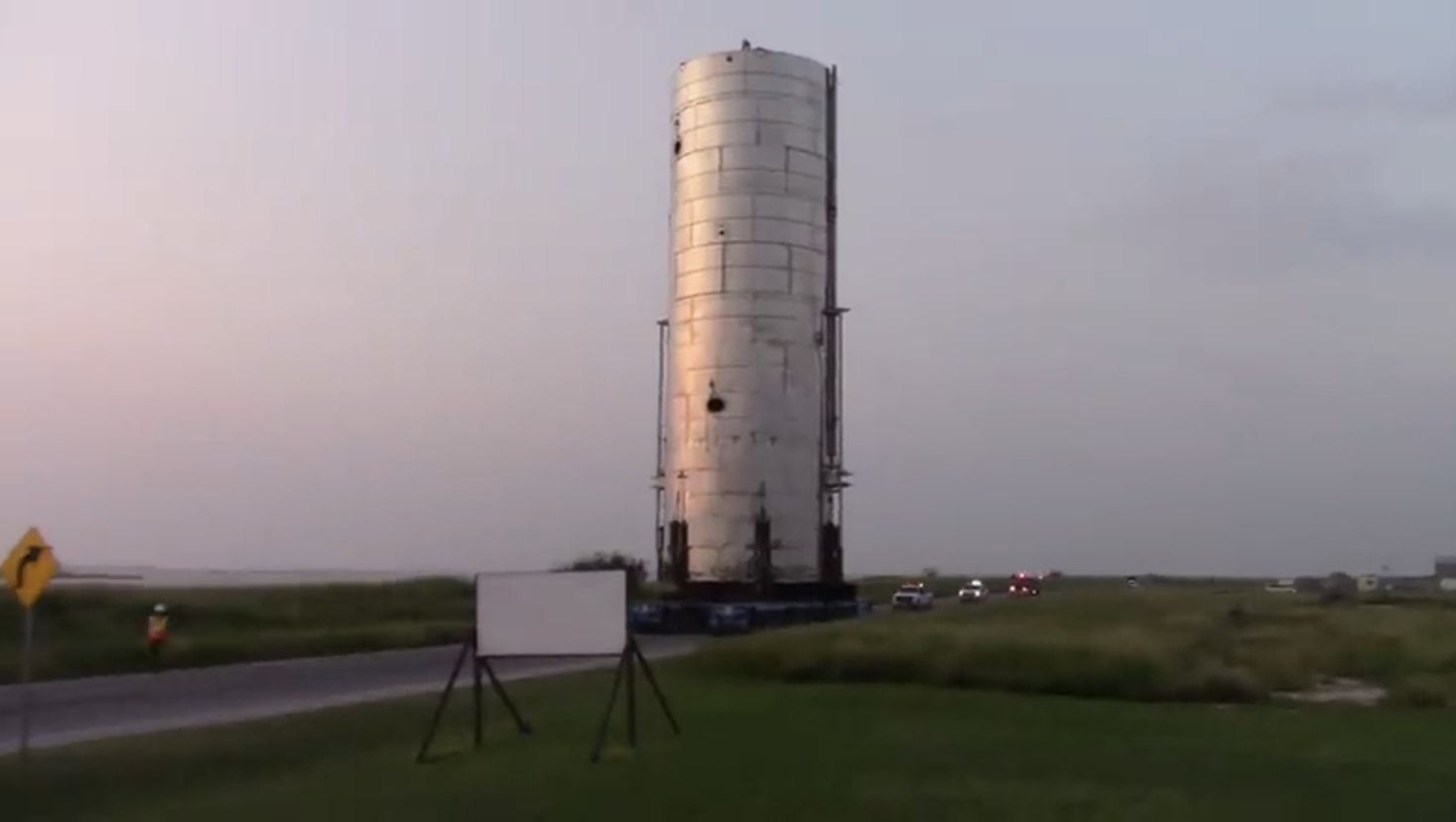
Mk1 testing and Mk2’s fate
Mk-1’s testing began with a cryogenic pressure test on November 30, 2019. This test was meant to make sure Mk1 could hold up to the high pressure and low temperatures that would occur during flight. Due to bad welds, the vehicle couldn’t handle the pressure and exploded in a cloud of super-chilled nitrogen. The loss of Mk1 wasn’t a major one, as SpaceX wasn’t expecting to ever fly the vehicle.
New Rings
Mk1’s construction process and failure revealed issues that would prevent a Starship of its construction method from ever flying. SpaceX radically changed its construction process, not only to decrease the number of welds but also to decrease the mass. Mk1 was made up of large steel plates welded into rings and stacked on top of each other. Not only did that create many weak points, but it also made building the vehicle laborious and time-consuming. With the purchase of an IMCAR machine, SpaceX began making each ring out of a single sheet of rolled steel. IMCAR is an Italian company that specializes in making machines that roll steel into circular barrels.
SN1, SN2, SN3, and the ‘Boppers’
In the early part of 2020, we saw the construction and completion of two scaled-down Starship test tanks. These two tanks used different welding techniques and had improved bulkhead designs. Both were tested to destruction at the launch site.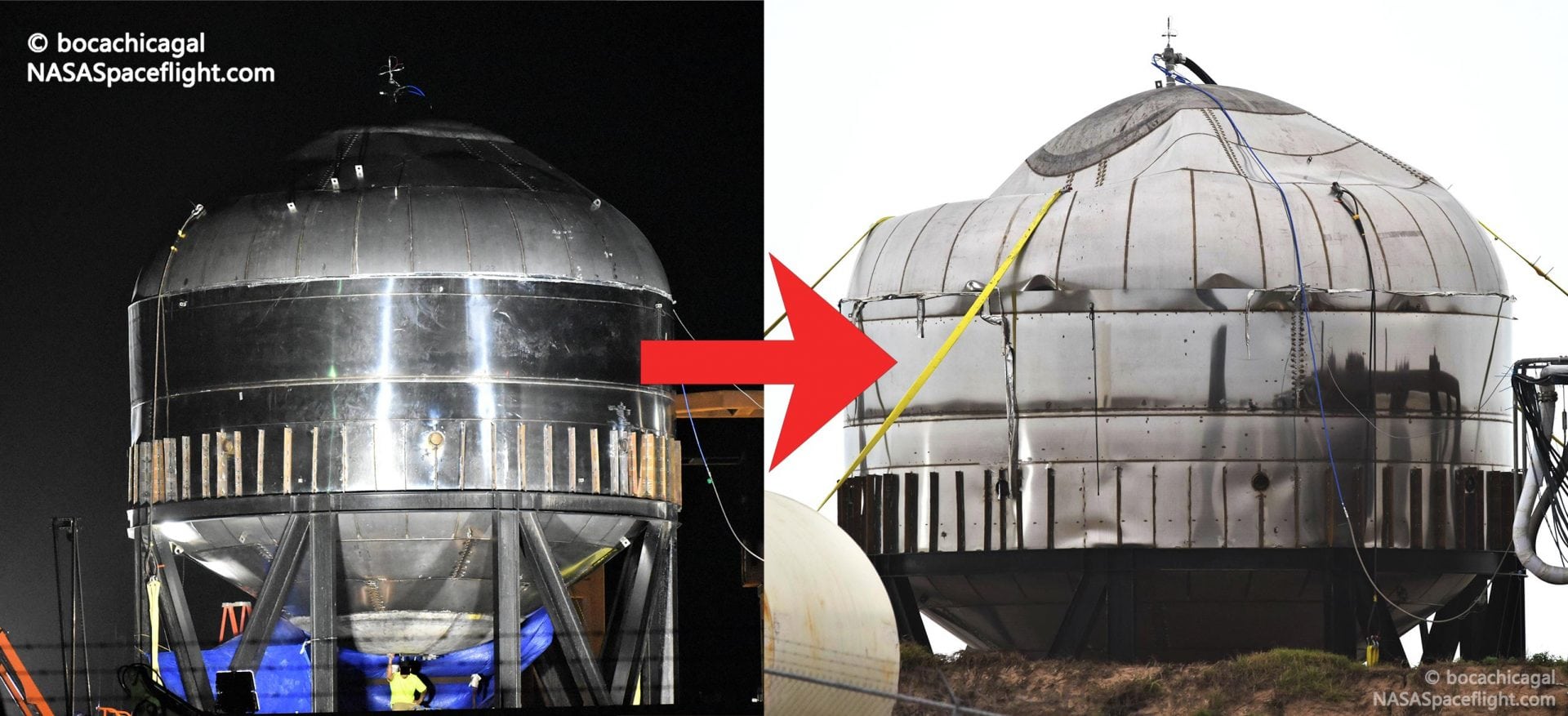
SN1 testing
SN1 failed during its first cryogenic test when its thrust puck failed. The thrust puck is the bottom bulkhead that doubles as an attachment point for Raptor engines. The thrust puck must take the force from the Raptor engines and distribute it across the airframe. The failure sent the vehicle several meters into the air.
Thrust puck redesign
SpaceX temporarily refocused their efforts on the thrust puck. They completely redesigned it to be able to withstand the 7 bar necessary for flight. They built a scaled-down prototype, SN2, which was similar in size to the pre-SN1 test tanks, to test the new design. SN2 passed cryogenic testing with flying colors and was retired to a concrete stand near SpaceX’s scrapyard.Starship SN3
SN3 was the next prototype and sported the newly redesigned thrust puck. It was smoother than SN1 and had many improvements. Unfortunately, a testing configuration error caused the vehicle to lose pressure in its lower tank and collapse during a cryogenic test. It wasn’t the fault of the vehicle this time, but actually the fault of the ground support equipment (GSE). The GSE was unable to keep the two tanks in the vehicle at similar pressures. The lower tank crumpled under the weight of the upper tank.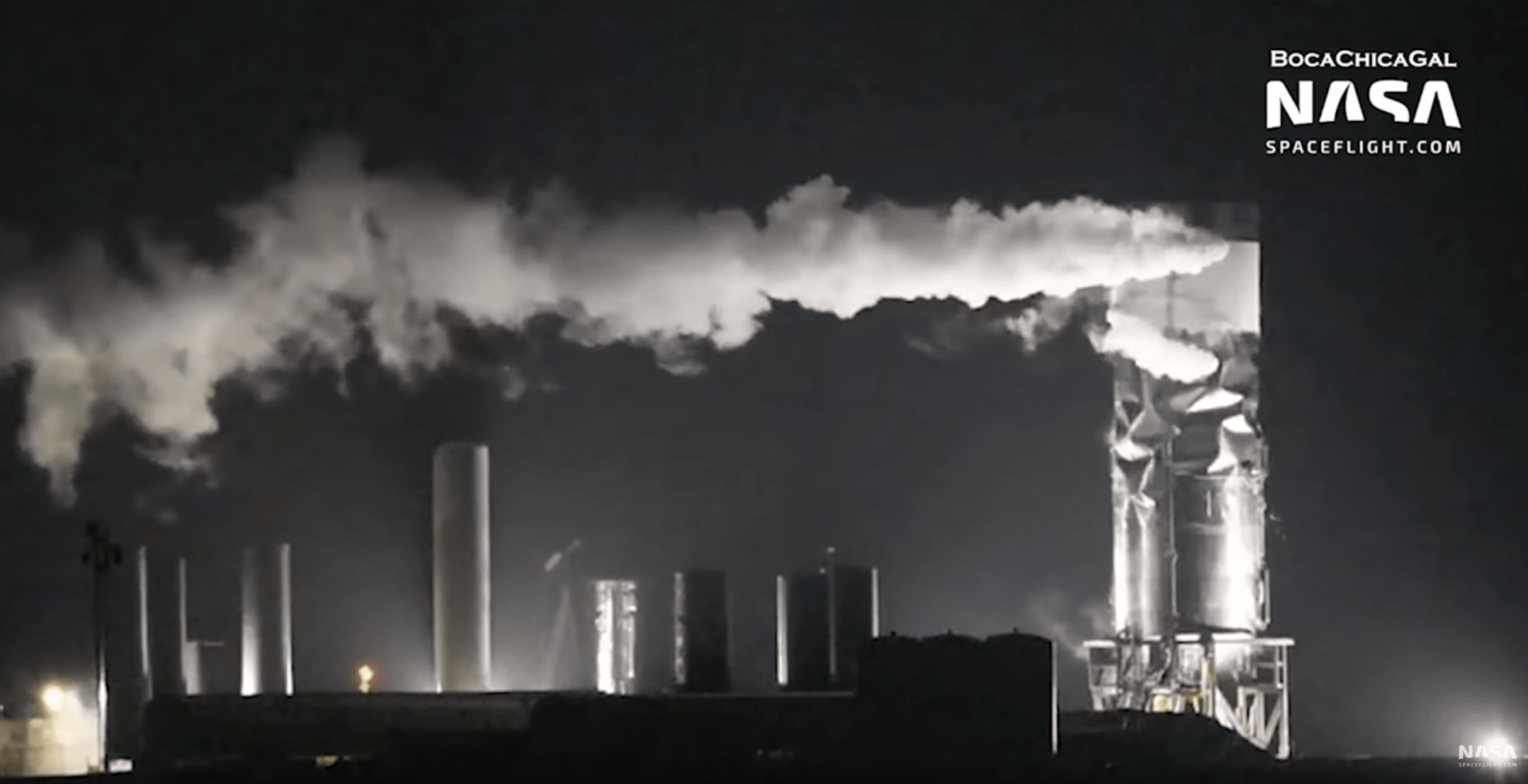
Starship SN4 and first static fires
After the SN3 failure, SpaceX quickly churned out the next prototype: SN4. It was again noticeably smoother than the previous prototypes and reused the lower part of SN3’s undamaged skirt section. On April 26, 2020, SN4 passed cryogenic testing, becoming the first full-sized Starship prototype to do so. It reached a pressure of 4.9 bar, which Elon Musk said was “a softball tbh, but that’s enough to fly!” A Raptor engine was installed the next day, and SN4 static fired for the first time on May 5, then again only a day later on May 6. The first static fire fed fuel from the main tanks while the second one fed fuel from the smaller header tanks. Following the two successful static fires, the Raptor engine was uninstalled.More SN4 testing
SN4 underwent another cryogenic test, but this time reached a pressure of 7.5 bar, enough for an orbital flight. Following that, a different Raptor engine, Raptor SN20, was installed. That engine static fired for the first time on May 19. During the static fire, a methane line was knocked loose from the vehicle, and slightly scorched it. SpaceX was unable to safely depressurize the vehicle, so no one was allowed to be near SN4 for two days while its fuel slowly boiled off. Fortunately, the repairs were minor and the vehicle static fired again on May 29.SN4 failure
The static fire was successful, but the vehicle started leaking oxygen and methane, due to a GSE pipe becoming disconnected. Moments after the static fire, the vehicle exploded.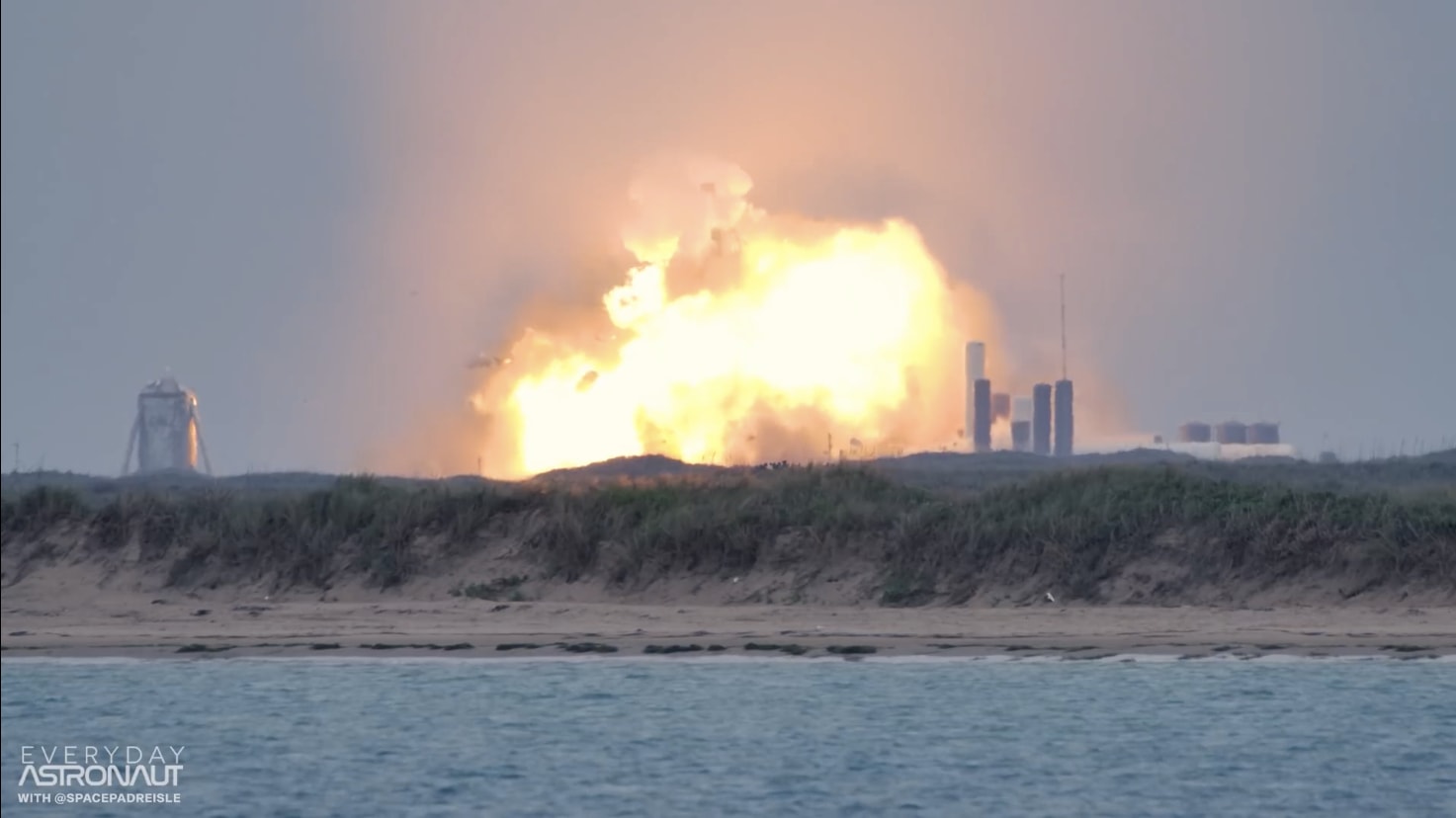
The cause of SN4’s failure
It was later found out that the quick disconnect system was responsible for the failure. The quick disconnect system disconnects the vehicle from ground support equipment prior to launch. A fuel line was knocked loose and created a large cloud around SN4. A hotspot in the engine bay ignited the cloud and detonated the vehicle. The quick disconnect test was expected to be an easy test but ended up causing a catastrophic failure.Starship SN7 and SN7.1
SN7 followed SN4. It was made of an entirely different steel alloy. The previous Starship prototypes used 301 stainless steel, while SN7 used 304L stainless steel. 304L steel is stronger under cryogenic temperatures. During its first cryogenic pressure test, intended to be to destruction, the vehicle didn’t pop, but rather, sprung a relatively small leak at 7.61 bar. SpaceX reinforced the failure point and conducted another pressure test a few days later. This time, the vehicle failed at the bottom bulkhead’s weld line and went several meters into the air and to the side, taking its test stand with it. The pressure SN7 reached during its second test is still unknown but was presumably an acceptable pressure.SN7.1 was tested a couple of months later. SN7.1, like SN2, tested a new thrust puck design. After several aborted attempts, SN7.1 was tested to destruction on September 23.
Starship SN5 and SN6
SN5, after waiting in the wings for several weeks, rolled out to the pad on June 24. On July 1, SN5 passed cryogenic testing and static fired on July 30. Five days later, on August 4, SN5 became the first Starship prototype to successfully hop.
SN8
SN8 is the first full Starship prototype made almost entirely of 304L stainless steel. It’s also the first Starship prototype with a nosecone and aerodynamic control surfaces intended for flight.For the 12.5-kilometer hop, SN8 will lift off under the power of three Raptor engines, shut them off once it reaches the right speed and altitude, and coast the rest of the way to 12.5 kilometers. Once at that altitude, SN8 will use its body flaps and RCS thrusters to reorientate itself to descend belly-first. Prior to landing, SN8 will reorientate to a vertical position using flaps and its Raptor engines then attempt a soft propulsive landing on the landing pad.
SN8 passed cryogenic testing on October 8 and successfully static fired for the first time with three engines on October 20 and a second time with a single engine on November 10.




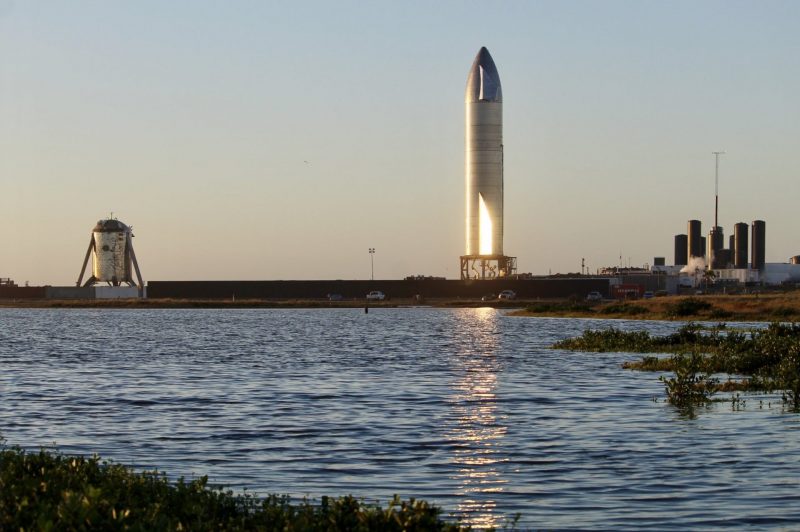
I know that GOLD is transported on these missions.
Tell my sister Carol Rose to return mine. Her little brother richard beddard
??
:))
I cant wait for this! My minds narration software played your ( Tim Dodd ) voice as I read the article…
Same!
Nice free flight prep descript! Can’t wait to see it. Good job Dodd!
sad te launch is dealyed
:))
Cant wait till sn8 goes into the air
Did they do the hop?
yes, they did it but didn’t tell anybody
Wait SN8 will land on OCEAN? I thought it will attempt to land on the landing pad. But still it will be very cool to see a real fully-assembled starship flying.
If I understood it well, they will do a hop above the ocean so if they see some abnormal parameters they can just splash it in water without causing damage to the landing pad. If the parameters are good they will land it back to the landing pad. At least I hope so 🙂
me too.
Where are you guys viewing from. Driving down to see the launch and bringing my 9.25″ telescope for viewing.
Hello!
Let me begin by saying I thoroughly enjoy your coverage of not only Starship development, but all things rocket science related.
I had a question in regards to starship static fires and hops. Is it known whether or not they have considered some form of deluge system for the test stand? Given the recent issues with the concrete below the test stand, would a deluge system help to alleviate some heat and sound vibration wear and tear on said concrete? Could it help downtime between tests to repair concrete? I am unsure if anyone has touched this subject so I do apologize if I am rehashing an old question.
Looking Forward to more of your coverage.
D
That would be great but remember that Starship is designed to land on a flat surface and then take off from the same surface (of Moon or Mars). It can’t rely on a deluge system or a test stand.
I understand that it will need to launch from unimproved surfaces with no stand when it gets to its destination. However, while still on Terra Firma, SpaceX can provide systems to ensure the most longevity, and in turn the best test information of, for what is all intents and purposes, experimental equipment.
Get it flying. Work out all the kinks of it’s belly flop, then proceed with a test series of landing on unimproved surfaces.
It’s initial launch will always be from earth on some form of improved launchpad.
I’m amazed by SpaceX rapid progress with their designs and also i love transparency around development process. We are lucky to see so much progress being done in front of our eyes.
I always wondered though why Starship has 3 vacuum engines instead of just one – once you are in orbit you don;t need that much trust to accelerate and it brings much more dead weight and complexity.
Because you already need the vacuum engines before the vehicle is in orbit. If it does not have enough thrust in that time of the flight, it will not accelerate fast enough to gain an orbit trajectory before it hits the earth again.
Which means due to weight of the vehicle it needs transition phase when all of engines are working then switching to vacuum ones to accelerate 25k kph to reach stable orbit. I bet it would be possible to use sea level based ones for longer but it probably would be heavier on fuel than actually hauling three engines along. Thanks for the tip – do you have more data on velocities from somewhere ?
I do not have numbers, but I guess the higher efficiency of the vacuum engines will outweigh the added mass.
On the “PRELAUNCH PREVIEWS” page (Upcoming Launches) I see liftoff in 2d 5h 30m, but here on this page I see that it will happen today. The automatically running clock on that other page is amazing, though! Looking forward to see the launch, also in case I miss the live event. And I do like the Everyday Astronaut coverages of SpaceX, NASA and other events. Good style, no wonder they take you as a host even into their own events already. Good work.
Any reason this isn’t linked on the upcoming launches page?
Your SN8 12.5km flight landing engine relight 1-3-2 sequence is a very interesting detail. Never read about that anywhere else.
I am guessing 1 will be the central engine feeding from the header tanks, then after the fuel on the main tanks stops sloshing and settles back down on the tail side (due to the acceleration from the running 1st engine) both side engines will (?) relight and central engine will shutdown.
I would not be surprised if one of the conclusions of this test flight is that some anti-sloshing main tank inner panels are unavoidable.
Great post, as usual, Ethan. But I need to comment on your job title: It’s the best alliteration I’ve heard since “A Better Bunny, A Happy Hare!” — Roger Rabbit.
I am a Great Space Nerd, and now l am a very big fan of SpaceX. Hope this test flight will be totally successful. Godspeed SN8:-). #SpaceX #SN8 #SN8_12.5kmHop.
Dude… where are you? SpaceX claims they’re lighting this thing off in an hour!
It’s every quiet.
I still cannot believe what I saw. It’s was absolutely glorious just how well that test actually went. I know that if they didn’t have the header tank pressure issue that SN8 would of nailed that landing. Tim thank you for the exceptional coverage of this test. Thank you to everyone on the EDA crew.